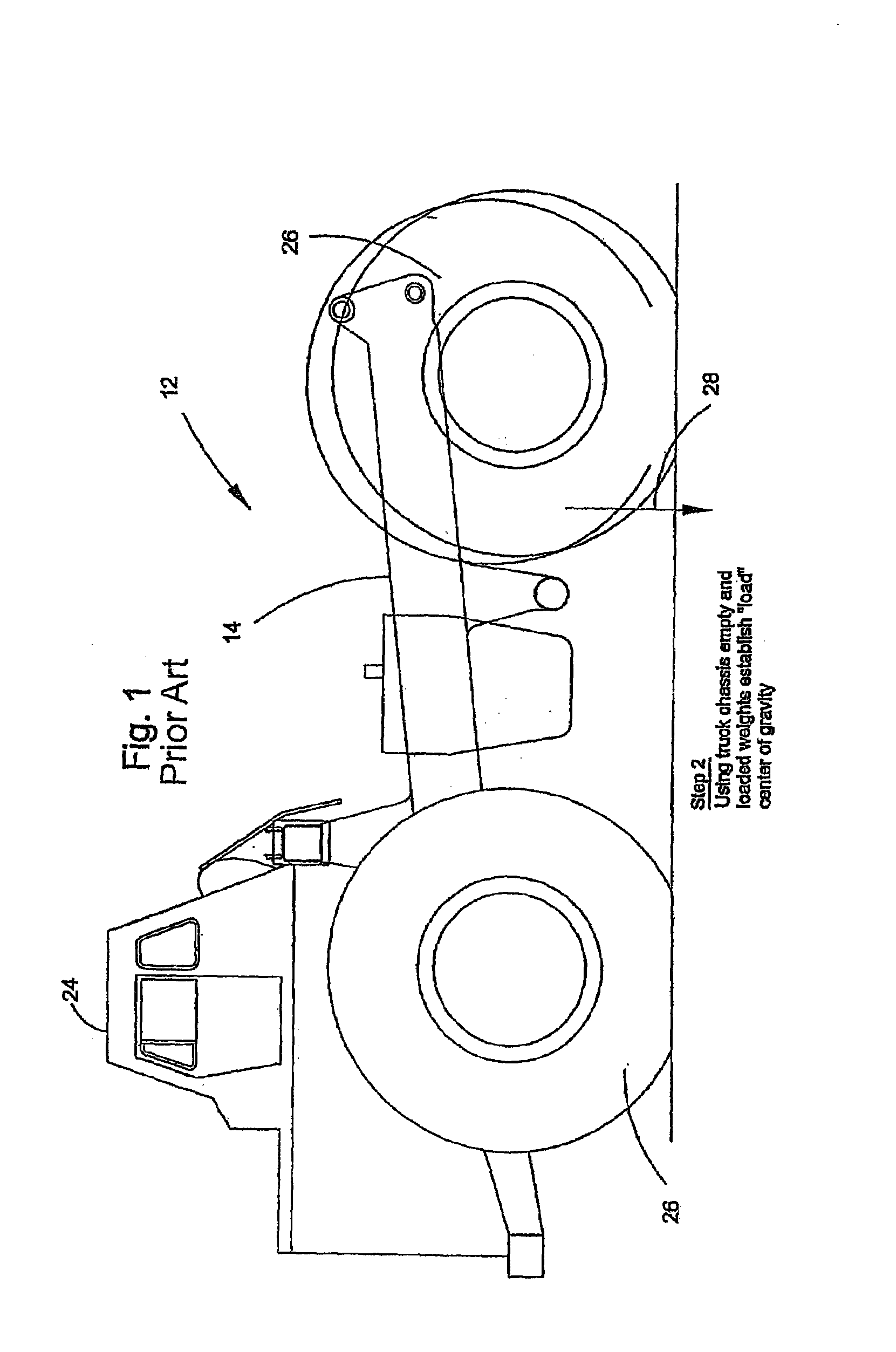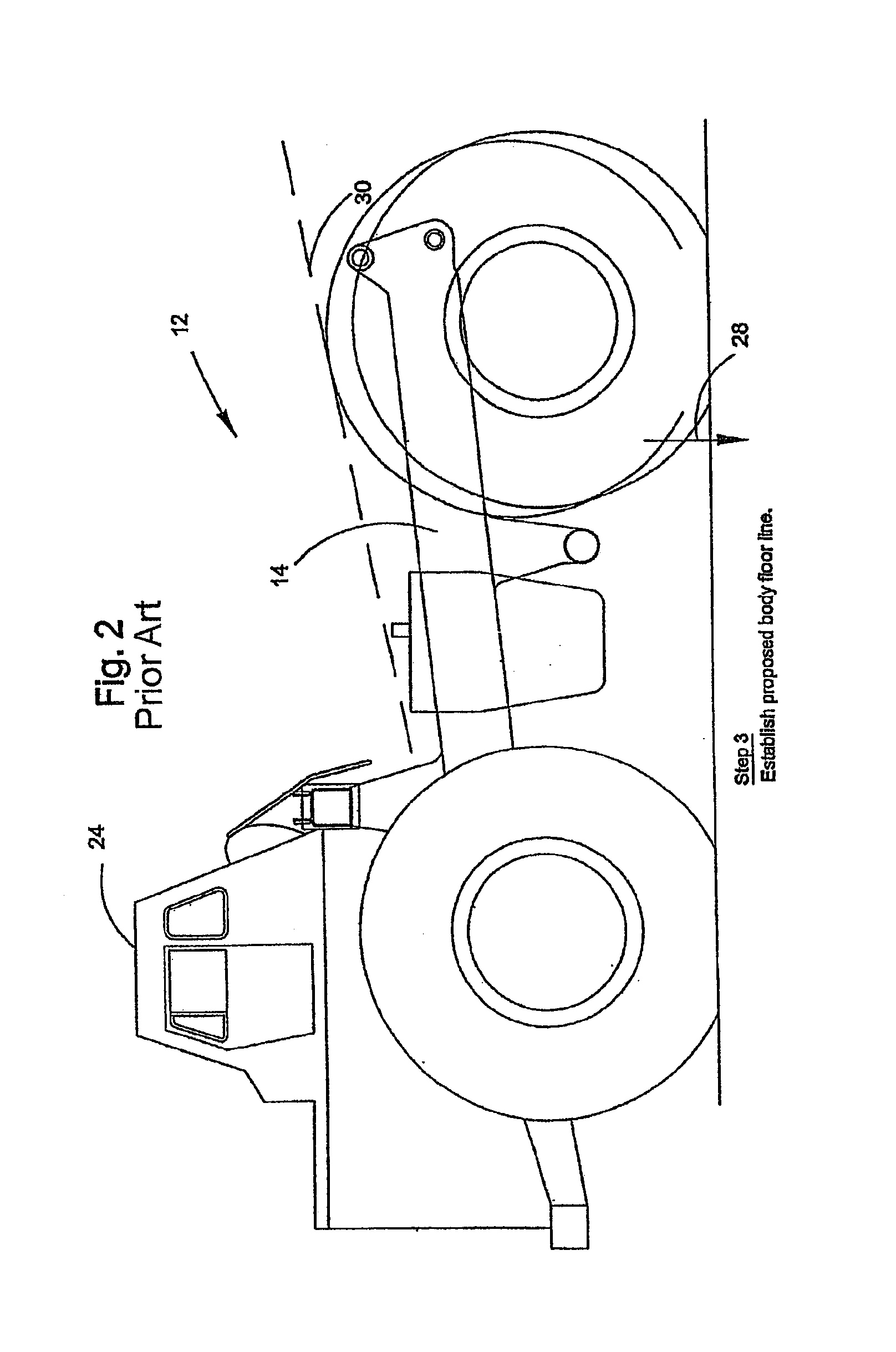Process for three-dimensional modeling and design of off-highway dump bodies
- Summary
- Abstract
- Description
- Claims
- Application Information
AI Technical Summary
Benefits of technology
Problems solved by technology
Method used
Image
Examples
Embodiment Construction
[0035]Referring now more particularly to the drawings there is shown in FIGS. 1-17 an illustrative sequence of process steps for designing a dump body 10 for an heavy-duty off-highway truck 12 in accordance with the teachings of the present invention. The truck 12 includes a chassis 14 to which the dump body 10 is attached for pivotal movement about an axis between a lowered position for receiving and transporting a load of material and a raised position for dumping a load of material. As shown in FIG. 17, the dump body 10 is generally constructed of steel panels which define the shape of the dump body and beams which form the structural framework for the dump body. The dump body comprises, in this case, sidewalls 16, a front wall or front slope 18, a floor 20 and a canopy 22 integrally connected to the top end of the front slope 18 and extending over the cab 24 of the truck 12. The truck chassis 14 is supported by a plurality of tires 26.
[0036]In the illustrated embodiment, the tru...
PUM
 Login to View More
Login to View More Abstract
Description
Claims
Application Information
 Login to View More
Login to View More - R&D
- Intellectual Property
- Life Sciences
- Materials
- Tech Scout
- Unparalleled Data Quality
- Higher Quality Content
- 60% Fewer Hallucinations
Browse by: Latest US Patents, China's latest patents, Technical Efficacy Thesaurus, Application Domain, Technology Topic, Popular Technical Reports.
© 2025 PatSnap. All rights reserved.Legal|Privacy policy|Modern Slavery Act Transparency Statement|Sitemap|About US| Contact US: help@patsnap.com



